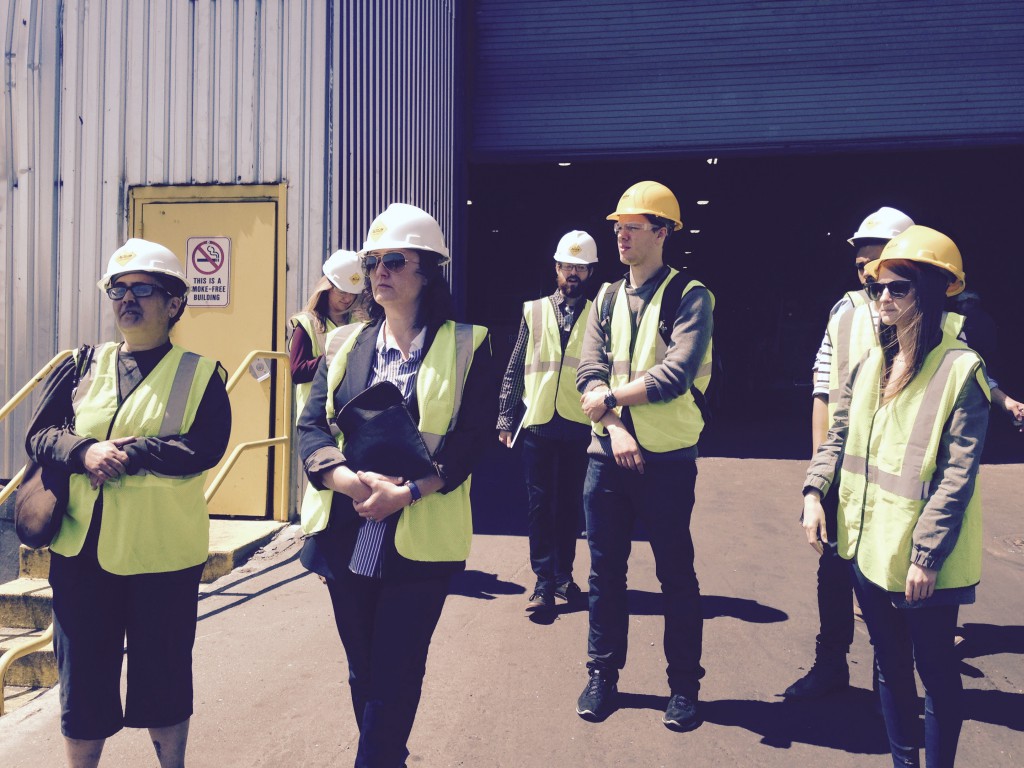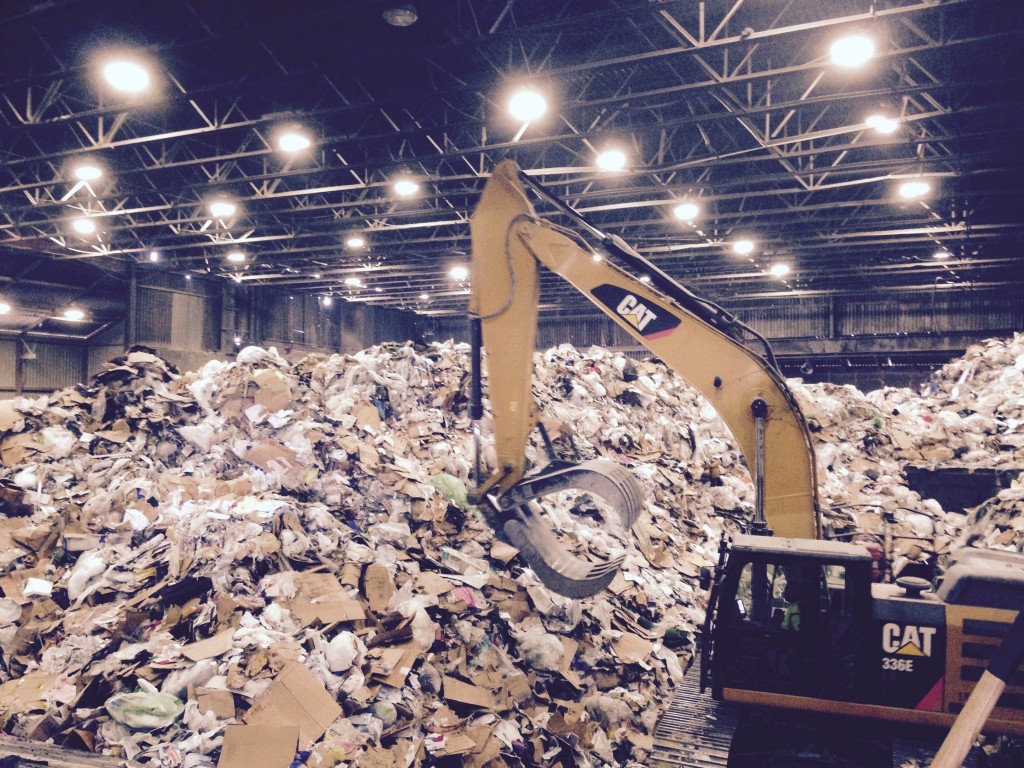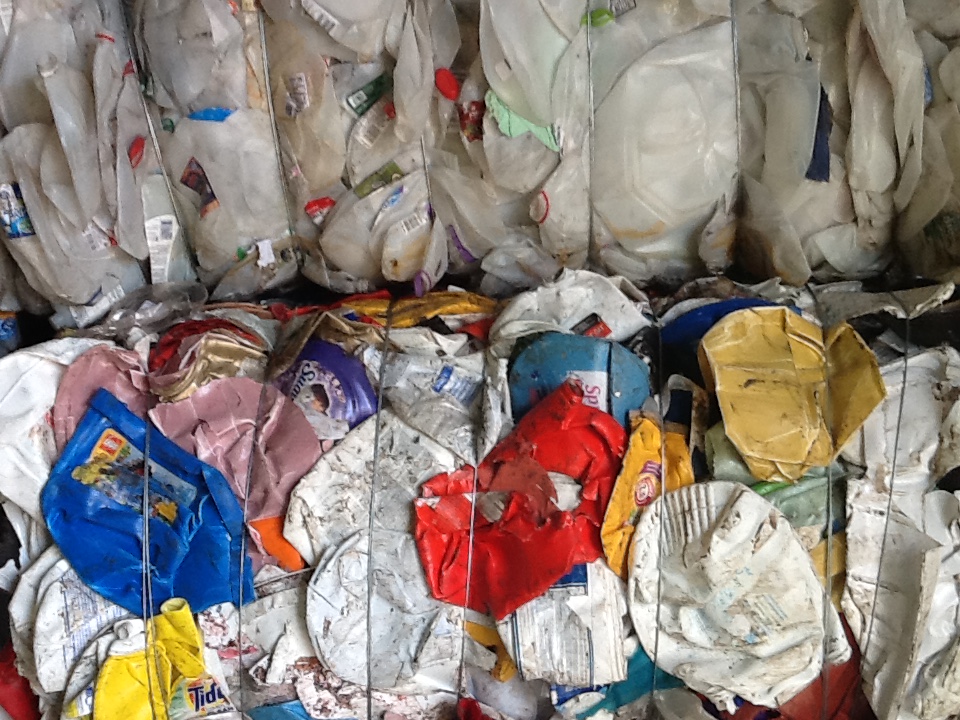 Great Forest recently toured Action Environmental Group’s Materials Recovery Facility (MRF) in the Bronx to get a first-hand look at what happens to some of the commercial waste and recycling generated by New York City’s businesses.
Great Forest recently toured Action Environmental Group’s Materials Recovery Facility (MRF) in the Bronx to get a first-hand look at what happens to some of the commercial waste and recycling generated by New York City’s businesses.
 The facility processes 40 tons of material an hour, much of it paper, which makes up the bulk of an average commercial office building’s waste stream. The facility is also a transfer station, which means that it accepts trucks delivering trash materials as well as separated recyclables.
The facility processes 40 tons of material an hour, much of it paper, which makes up the bulk of an average commercial office building’s waste stream. The facility is also a transfer station, which means that it accepts trucks delivering trash materials as well as separated recyclables.
Because of the large variety of material coming into the facility on a daily basis, there is a constant adjusting and fine-tuning of the sorting equipment to maximize recovery of post-consumer streams to find a market for your recyclables.
When trucks arrive at the facility, they head to separate drop-off points for trash and recyclables, emptying their contents onto a “tipping floor”, which feeds into a pre-sorting area, where materials are routed through to the sorting machinery or separated out to be dealt with as trash.
On the facility’s giant tipping floor, we saw two excavators sitting in the middle of a mountain of materials as tall as the excavators themselves. In a constant back and forth, the yellow arms of the excavators scooped and lifted materials from the floor into a metering bin, which controls the flow of materials into the facility’s various conveyor belts and sorters. Cardboard and paper dominated the mountain that the two machines dug through.
As the materials travel through the facility, they are sorted by high-tech optical and magnetic machinery as well as by hand sorters:
- Optical sorting targets paper by lifting it out of the conveyor belt stream using air jets, leaving heavier items like cardboard to drop down into a different sorting area.
- Hand sorting is utilized at different points throughout the process: this is where plastic bags are removed from the stream; bulky items like old fire extinguishers are pulled out; and further detailed sorting is achieved.
 After sorting, materials are then baled into large cubes by material type, and shipped to manufacturers domestically as well as overseas. Plastic containers are baled by their chemical make-up, and – in some instances – by color.
After sorting, materials are then baled into large cubes by material type, and shipped to manufacturers domestically as well as overseas. Plastic containers are baled by their chemical make-up, and – in some instances – by color.
In speaking with Action staff, it was clear that receiving pre-sorted recyclables (with minimal trash contamination, and with paper separated from glass, metal, and plastics) was integral to meeting the needs of the market for post-consumer materials. The demand for cleaner recyclables means that there is a strong incentive to capture these materials from your trash stream and reduce your trash output, hopefully saving you money along the way.
Cleaner recyclables ensure that more material gets recycled, as contaminated recyclables sometimes end up in the landfill. This is why sorting your recyclables at the office is still a key step to proper recycling.
 Watch a video of the facility.
Watch a video of the facility.








